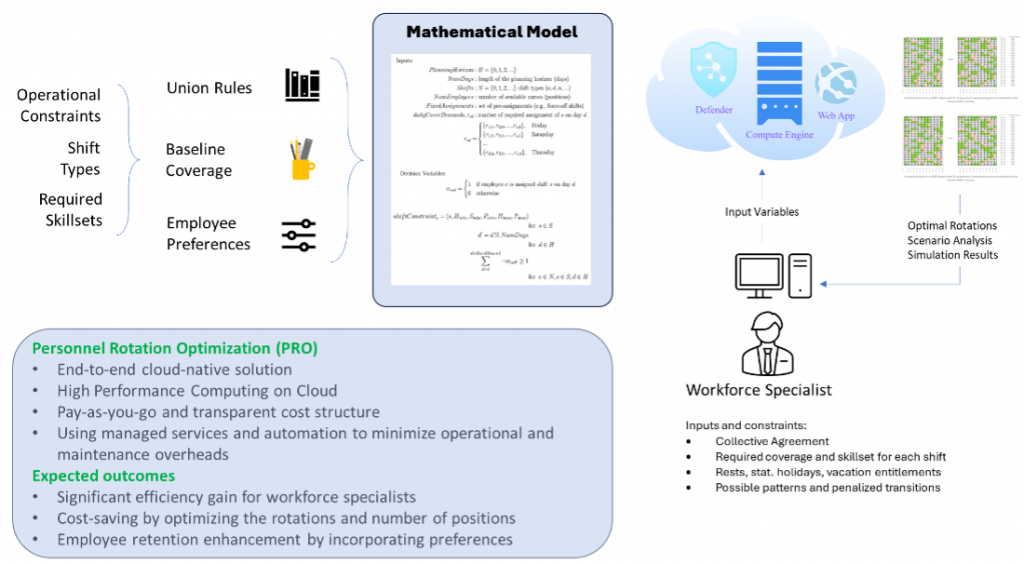Rotation (aka schedule) generation is an integral part of workforce planning; rotations must navigate regulatory and operational constraints. There are Hard Constraints, such as minimum staffing levels and maximum hiring budgets, that dictate the feasibility of a rotation. Also, there are Soft Constraints, such as desired shift patterns and requested vacations, that impact rotation quality. PRO optimizes rotations for efficiency and employee satisfaction by leveraging advanced mathematical modelling and AI-enabled algorithms.
Rotations determine how the personnel are assigned to shifts and play a crucial role in workforce planning. The employee unions and governmental authorities impose regulatory constraints. Also, the operational needs impose more constraints in terms of minimum required manpower. These define a set of Hard Constraints that decide whether a rotation is possible. For instance, the number of staff needed in certain shifts, the skill-sets that are required for certain shifts, and the budgetary limits are Hard Constraints. Additionally, there are some Soft Constraints that decide desirability a "feasible" rotation. For example, some unwanted shift patterns lower the quality of a rotation.
Workforce specialists manually generate the new rotations; one or more experts with years of experience and a bank of historical solutions create a new rotation by solving a mathematical puzzle. This process is repeated every time a unit needs to create or update its personnel rotation due to changes in the staffing or requirements, e.g., expansion of the unit, budget variations, change in the staff availability, and other clinical and operational necessities.

The PRO solution automates the process of generating optimal rotations. It takes as input the constraints and uses sophisticated optimization techniques to find the best possible rotation that satisfies all the constraints and minimizes the penalties. The PRO solution also provides an intuitive user interface that allows the users to modify the constraints, explore different scenarios, and visualize the results in various formats.



Harness the power of systems engineering, operational research, and artificial intelligence for enterprise planning at strategic, tactical, and operational levels.